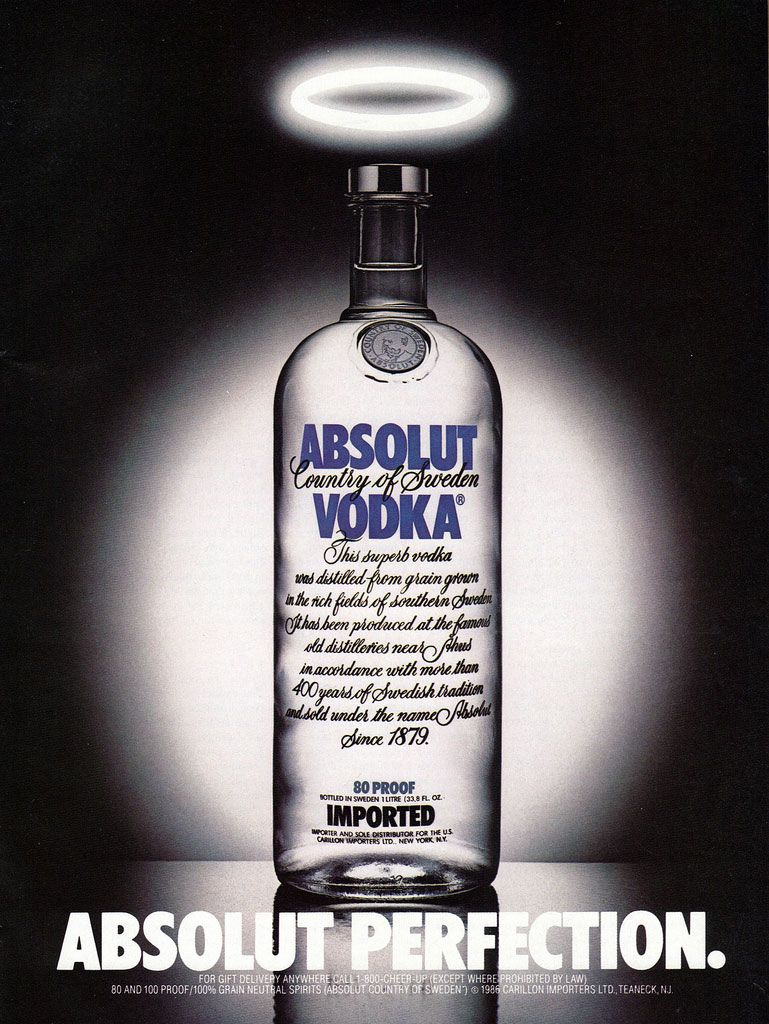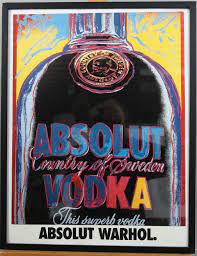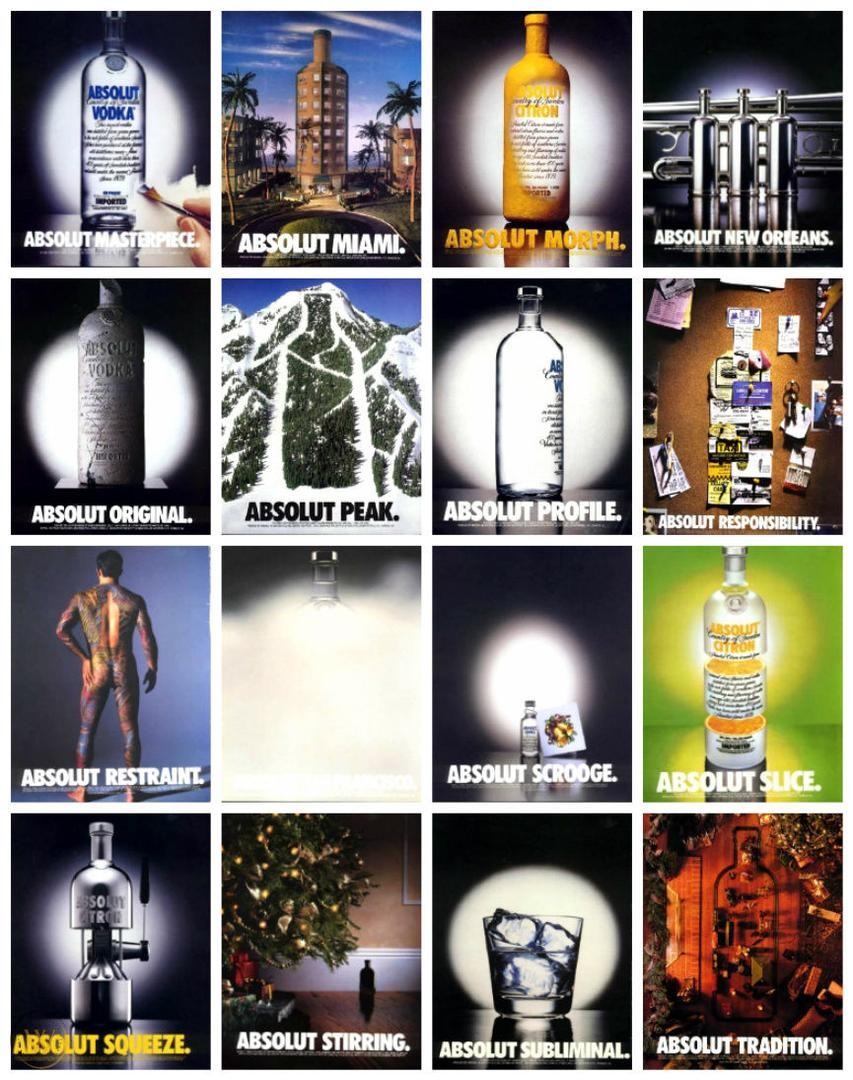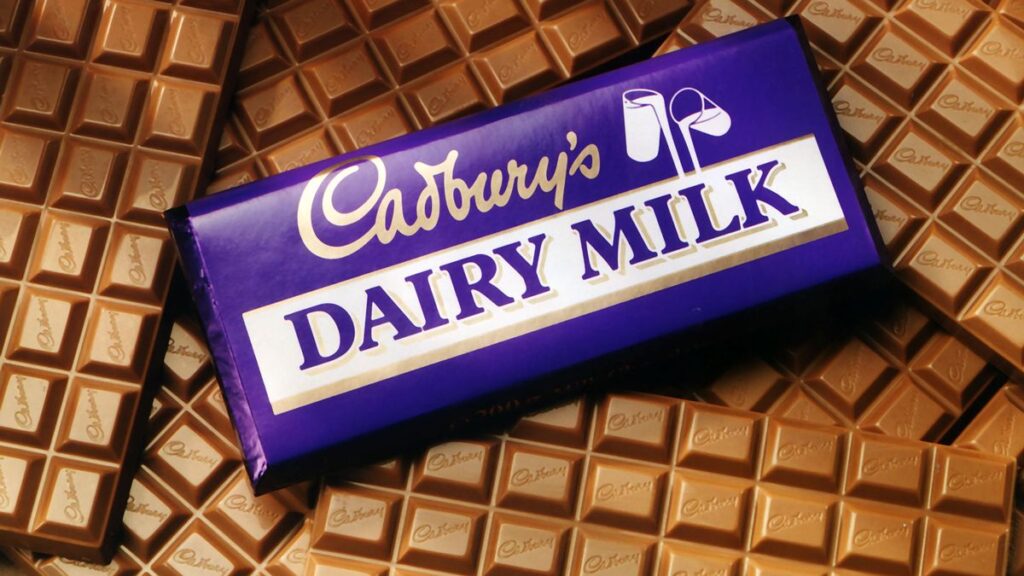Iconic Ads: Absolut

The Absolut bottle has been the core of the advertising which has made the brand one most of the sought out.
In the 1870s, Swedish entrepreneur L.O. Smith laid the foundation for the creation of Absolut Vodka.
And after 100 years, the Swedes seemed to have lost their taste for powerful spirits.
Lars Lindmark, CEO of Vin & Sprit (that marketed Absolut), saw the crisis. He considered exporting the vodka to the USA. In the US, vodka was viewed as a high-end product worth a premium. Lindmark also realized he needed a sleek design and good marketing to compete in the highly competitive American market.
He approached Gunnar Broman, of the Carlsson & Broman advertising agency.
The Absolut(e) Bottle
While Lindmark was tasked with promoting Swedish vodka abroad, the bottle was crucial. Gunnar Broman found the perfect pharmaceutical bottle at an old pharmacy in Stockholm’s Old Town. It made sense to have a pharmacy relationship as in the 16th and 17th centuries, pharmacists sold vodka.
Broman presented five ideas to the creative team at Ayer in New York. They ran through a lot of concepts, rapidly rejecting them. Premium bottles were often decorated with gold, silver, and other flashy embellishments. Broman envisioned something more low-key, transparent and authentic. The unique design of the see-through bottle pulled the viewer’s attention away from the product and towards the bartender or store shelf behind. A row of Absolut bottles would appear to be a vacuum from a distance.
Also, the design of the bottle was made to look like an old-fashioned advertisement. The product name was placed right on the bottle as a headline, followed by a label with text about the history and traditions.
A silver seal with L.O. Smith’s image was added to the bottle. The seal reminded us of the city’s rich heritage. It also appealed to Americans who like a more ornate design.
The name was also hotly debated. The first alternative, “Absolute Pure Vodka,” was ruled out due to trademark issues in the US. Instead, it was abbreviated to “Absolut” in Swedish. The word “pure” was forbidden by law. It was strengthened by adding the slogan “Country of Sweden” to the product name.
Finally, importers in the United States had to be persuaded. It arrived at Carillon Importers after passing via several importers.
The Absolut account went to Carillon’s New York agency Martin Landy Arlow. The new advertising agency requested major design adjustments, which Gunnar Broman’s colleague, Lars Börje Carlsson, improved. “Absolut Vodka” was written in bold, clear blue letters across the centre. The phrase “Country of Sweden” was written in elegant black type across the top of the bottle.
Absolut Perfection
Michel Roux was the No. 2 executive at Carillon when the Absolut marketing began in 1980, primarily in upmarket magazines.
TBWA’s advertising gave Absolut a refined image. “I want to make a fashionable business out of the booze-peddler business,” Roux told.
The Stockholm team had given very strict guidelines to follow: all advertising should focus on the bottle, the product should not be associated with any particular lifestyle, and the approach should be timeless yet contemporary.

It all started on an evening in November 1980. The print campaign originated when art director Geoff Hayes stepped out of the bathtub and sat in front of the TV to watch “The Honeymooners.” He was jotting ideas for the new account on his sketch pad. He drew a halo and angel wings on a bottle of liquor, labelling it “Absolut.” A halo and angel wings placed on a bottle of booze, he called his rendering “Absolut.” “It’s the Perfect vodka.” The next morning, Graham Turner a copywriter, proposed shortening the title to “Absolute Perfection.”
Roux had one more genius move. A series of advertising by famous painters and photographers reimagined the Absolut bottle. The Absolut bottle reportedly made it to Studio 54, where Michel Roux used to hang out with Andy Warhol. Warhol painted the bottle in 1985, and Absolut Warhol was launched in 1986. Warhol also encouraged artists like Keith Haring and Kenny Scharf to work with Absolut.
“I knew Andy Warhol very well,” Roux said in an interview “He was a teetotaler; he didn’t drink. He made me believe he was using Absolut as a perfume.”
And to think that TBWA did like this idea at all!





